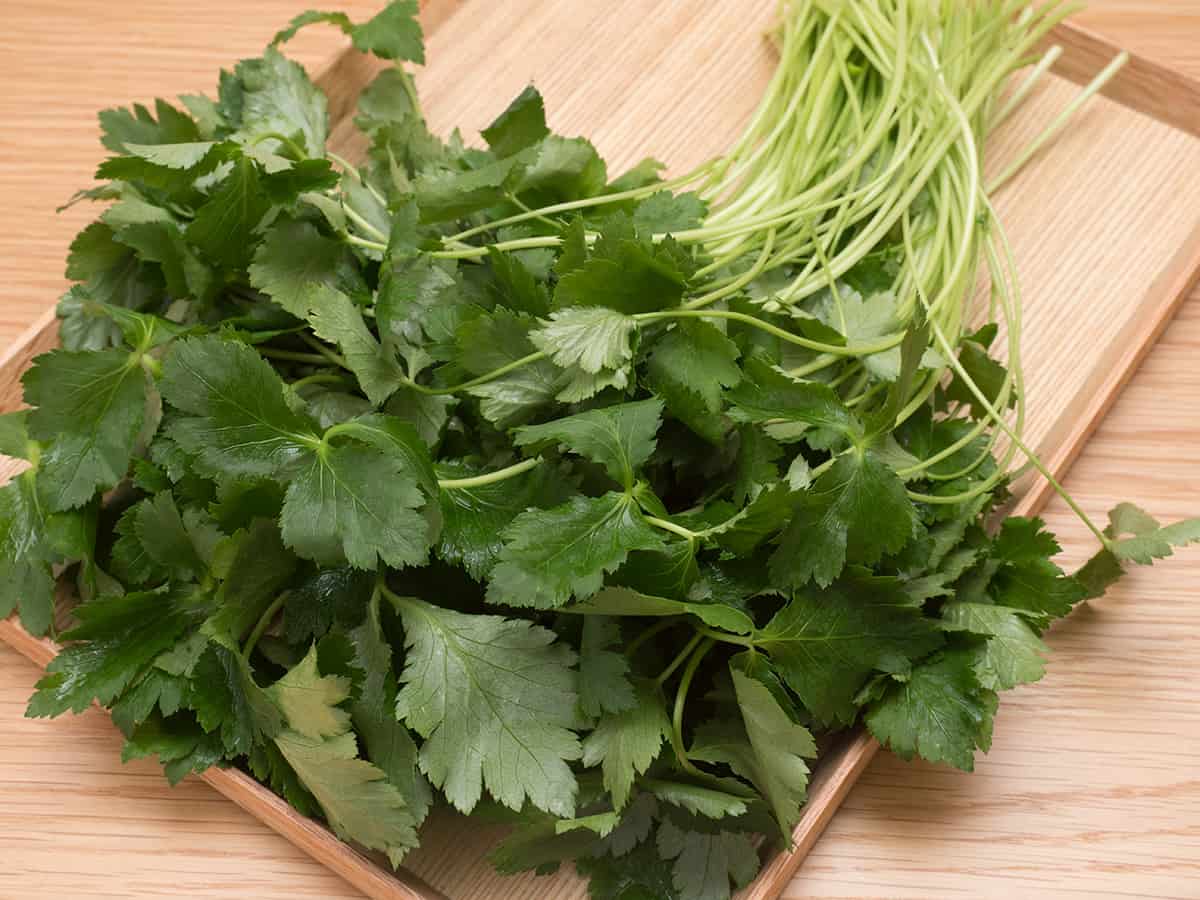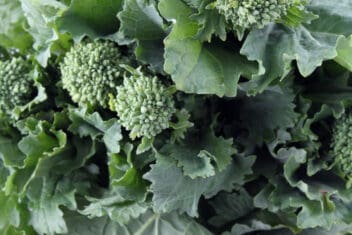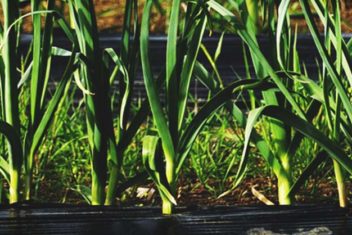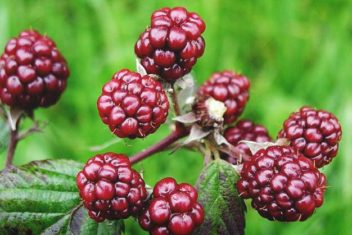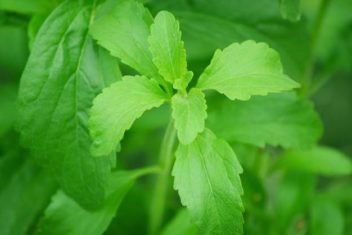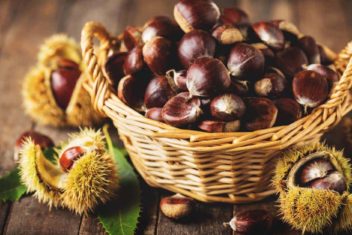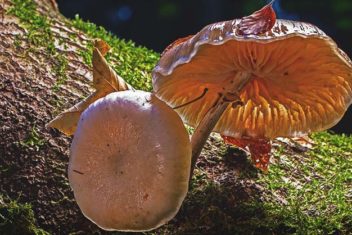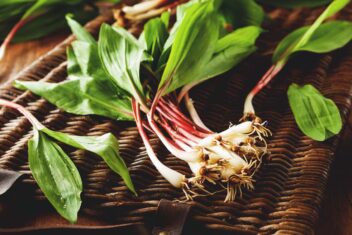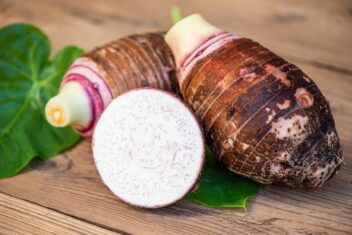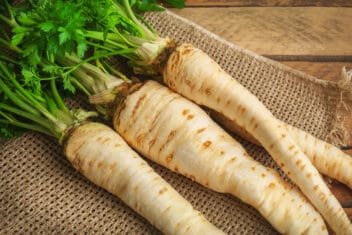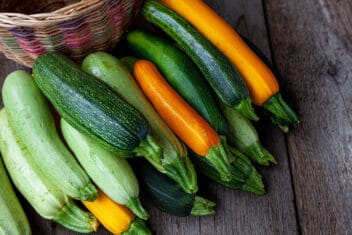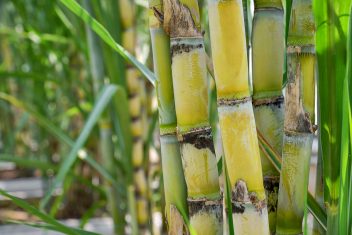Mitsuba is as familiar to Asian chefs as parsley is to Europeans and North Americans, but it’s about time more people across the entire globe started growing this marvelous herb.
Mitsuba has edible leaves, stems, roots, and seeds, and a unique flavor that is something like celery mixed with cilantro and sorrel.
If you’re looking for a new type of herb to grow, or are tired of growing the same ones all the time, try mitsuba. This shade-lover is easy to raise and ready for harvest in no time.
Varieties of Mitsuba
Mitsuba may be called a variety of different names, including wild Japanese parsley, purple-leaved wild Japanese parsley, Japanese honewort. They are the same thing, just sold under different names.
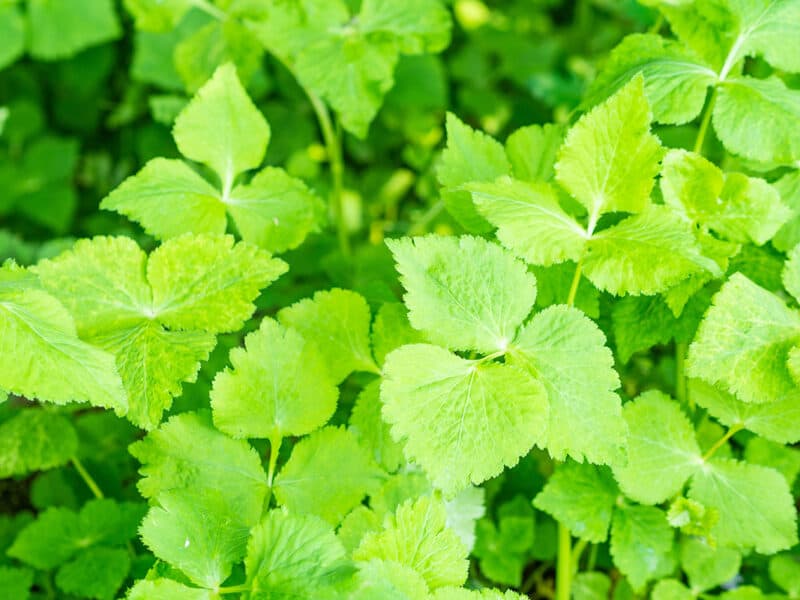
You’re more likely to find mitsuba sold under one of the names above, especially in North America.
There are two varieties in Japan, named after the region they’re from. The differences are slight.
Kansai
Kansai is the green, common variety. It’s disease-resistant and can also be grown as a microgreen.
Kanto
This type is much harder to find, partially because it has a special way of growing. The gardener in Japan doesn’t expose the mitsuba to light.
That way, it produces white stalks and is used in Japanese dishes that require the white stalk to blend with other white ingredients.
How to Grow Mitsuba
Mitsuba grows in USDA Zones 4 to 9. It’s not a cold-hardy plant and turns its toes up when the temperatures drop too much. It also bolts in the heat. It needs temps right in the middle.
Sun and Soil Requirements
Unlike many herbs that love the sun, mitsuba prefers shade or mostly shaded areas, especially during the hottest part of the day.
In the wild, mitsuba often self-seeds under trees in the shade because that’s where it’s happiest. The leaves turn yellow if the plant is too exposed to the sun.
Mitsuba requires soil containing good quantities of well-rotted manure dug in. The soil should be well-draining but have the ability to retain moisture. Mitsuba likes to be in a warm, moist environment.
Planting Mitsuba Seeds
As long as the risk of frost has passed, sow mitsuba seeds in the spring. This ensures you get a good supply before the heat hits. Avoid planting in the hottest of the summer months.
Sow every six weeks for continuous supply if you live in a cooler area.
You can also plant in the fall in warmer areas after the heat has passed.
In extremely cold climates in the early spring, sow seeds inside where you can keep them warm. When the seedlings are about 3 inches tall, transplant outside or into larger containers.
Make sure the danger of frosts has passed and you have a shady spot ready. The best temperature for germination is around 77°F.
Sow mitsuba seeds no more than 1/8 inch deep outside. In warm areas, scatter them on the surface and either sprinkle a thin layer of soil or leave uncovered.
Mitsuba plants should be about 9 inches apart. You can sow the seeds closer, but as the plant grows, space them out.
Use the thinned out plants in salads. Young and tender mitsuba are wonderful in a fresh garden salad.
Mitsuba grows to between 1 to 2 feet high, depending on the growing conditions. In the wild, it grows to around 3 feet.
Container Planting
Mitsuba grows well in containers, but given that it’s still close to its wild roots, you’ll find that in both containers and herb gardens the plant will be smaller than it grows naturally in the wild.
Use a good quality potting mix or vegetable container mix and water well. Make sure the container is well-draining and your chosen medium is able to retain moisture without being sodden.
Don’t let the soil dry out and keep the container in the shade.
Caring for Mitsuba
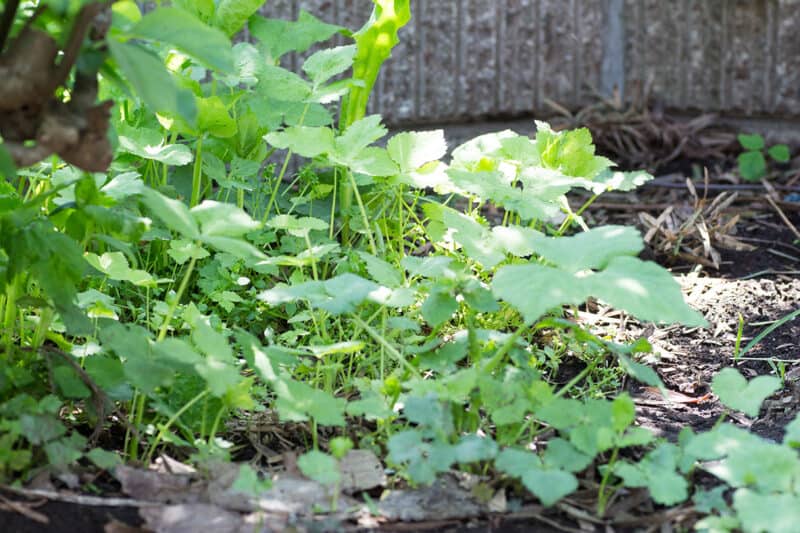
Japanese parsley doesn’t take too much maintenance if you give it a good foundation.
Fertilizer
I find mitsuba responds well to fish emulsion. Feed monthly with fish emulsion. Half strength is sufficient — plus it will make the emulsion go further.
If you have fertile soil and only feed your garden occasionally, feed the mitsuba at the same time.
Water
Water mitsuba well. It likes constantly moist soil, but not wet feet. If the mitsuba is in a container, don’t allow the medium to dry out.
In the garden, check the soil and once the first inch or so is dry, give the soil a good watering.
Imagine mitsuba in the wild, growing in shady areas under trees. The ground never quite dries out.
Deadheading
If you want the mitsuba to self-seed, allow the plant to flower. If I just want to use the plant for food, but not self-seed, I’ll deadhead the flowers as they appear.
Mitsuba doesn’t require pruning except to deadhead the flowers if you don’t want to allow the plant to self-seed.
Companion Planting for Mitsuba
Plant with other similar herbs, and taller herbs and plants that provide shade to the mitsuba. Plant with:
- Sweet Cicely
- Cilantro
- Bee Balm
- Chervil
- Woodland Strawberries
- Violets
- Lungwort
- Lamium (Great groundcover for shady areas of your garden)
Common Problems and Solutions for Growing Mitsuba
Mitsuba is a hardy plant when it comes to pests and diseases. Unfortunately, like most plants, there are a few things that will affect it.
Slugs and Snails
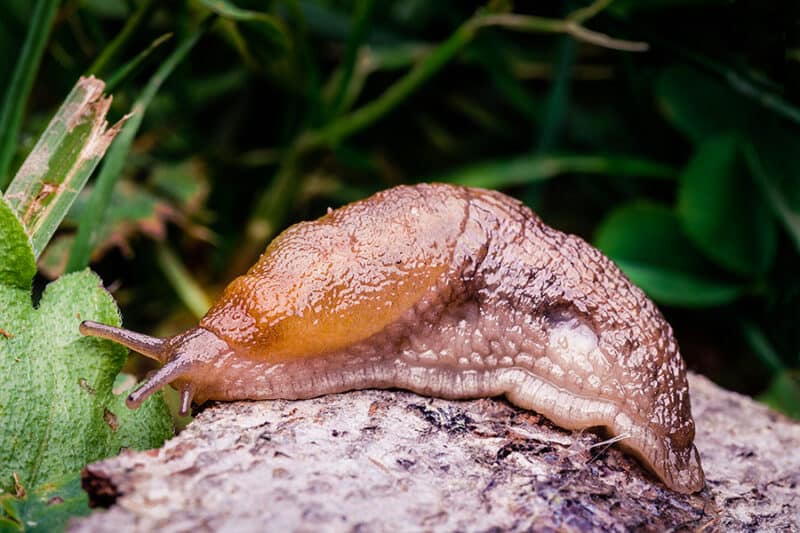
Slugs and snails love mitsuba as much as chefs do. The young plants are their favorites.
Use slug and snail pellets, diatomaceous earth, or any of the homemade recipes available.
Because I eat much of my mitsuba raw, I avoid chemical methods to rid the garden of these pests.
Downy Mildew
This white, fuzzy fungus appears on mitsuba when airflow is obstructed by too many plants in one small area, and often when the plant is sitting in wet soil that hasn’t drained well.
Water in the morning to allow plenty of time for the mitsuba to dry, and remove any weeds and cut back excess plants. Treat any disease as soon as you see it.
Earwigs
Earwigs can be a problem for mitsuba. If it looks like the foliage has been eaten and left with jagged edges, earwigs may be to blame.
I find the best method to rid your garden of earwigs is to scrunch up newspaper and place it around your plants. Leave it there overnight and in the morning check to see how many earwigs moved into the paper overnight.
Discard the paper and earwigs.
Harvesting Mitsuba
When the mitsuba plant is about 8 to 10 inches tall, cut across the plant at the soil level. The plant will grow more stems.
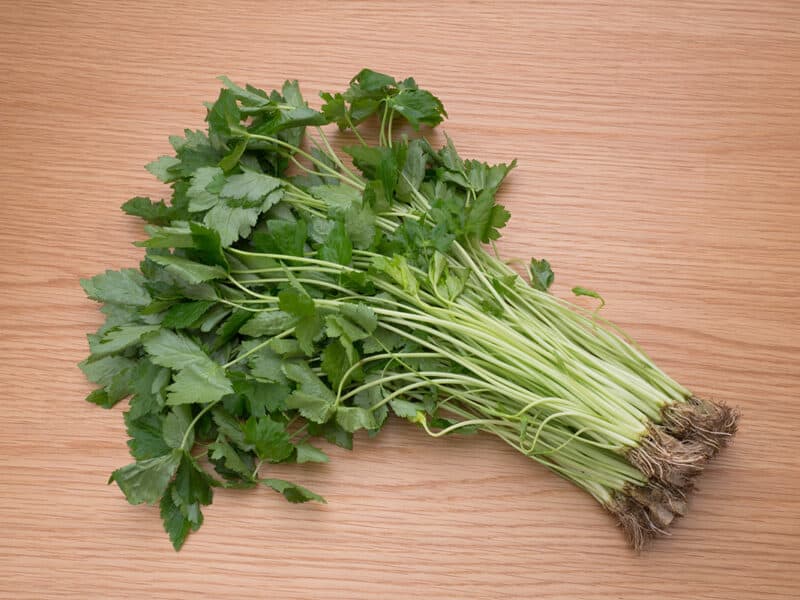
You can allow the plant to go to seed and mitsuba return year after year. Who doesn’t want a plant that practically grows itself?
I use mitsuba raw in salads or side dishes. Cooking it too long can cause the mitsuba to become bitter or lose its flavor. If you use it to add to a hot dish, add the mitsuba towards the end of cooking.
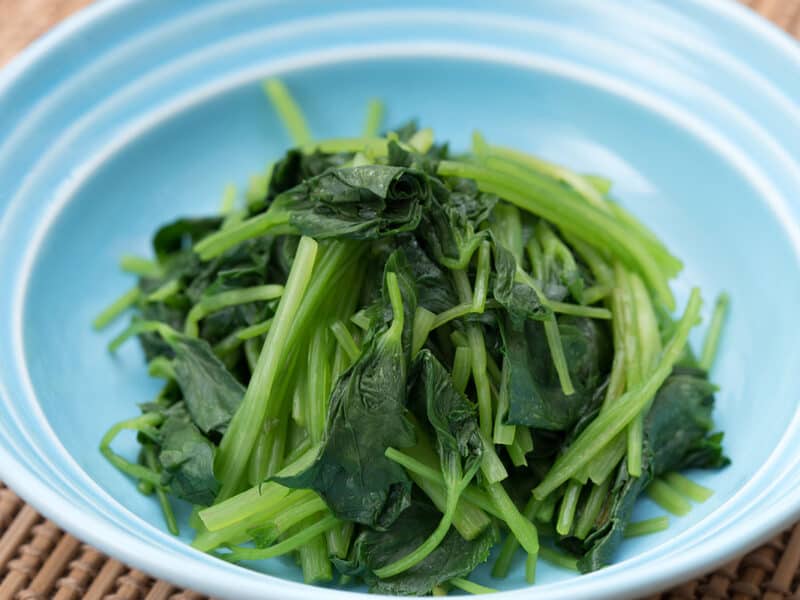
Don’t discard the stems. Unlike a lot of herbs with woody stems, mitsuba stems are tender and as tasty as the leaf portion.
You can use it in soups, pasta, and Asian cooking like rice and stir-fries. A little of this herb goes a long way. Try it made into a salad with crab.
